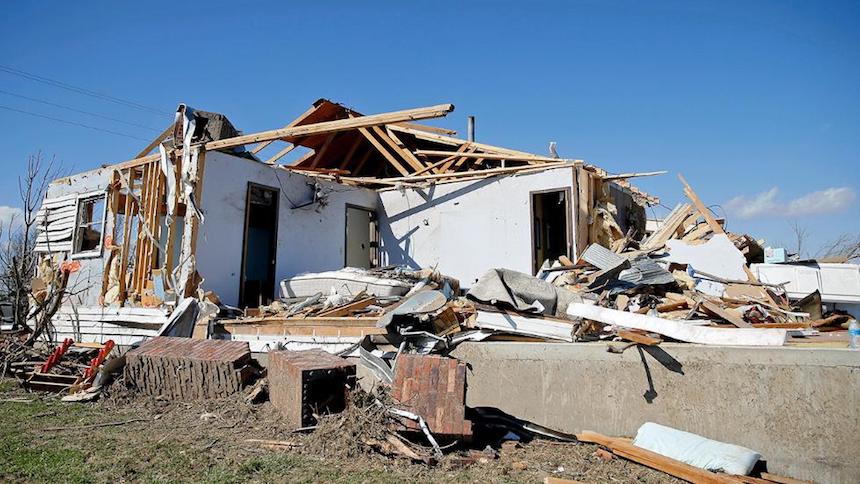 Impact Forecasting, Aon Benfield’s catastrophe model development team, today launches the latest edition of its monthly Global Catastrophe Recap report, which evaluates the impact of the natural disaster events that occurred worldwide during March 2017. Aon Benfield is the global reinsurance intermediary and capital advisor of Aon plc.
Impact Forecasting, Aon Benfield’s catastrophe model development team, today launches the latest edition of its monthly Global Catastrophe Recap report, which evaluates the impact of the natural disaster events that occurred worldwide during March 2017. Aon Benfield is the global reinsurance intermediary and capital advisor of Aon plc.
The report reveals that an extremely active period for severe weather persisted in the United States throughout March, as four separate significant outbreaks led to extensive damage in central and eastern parts of the country.
AON says that the most prolific outbreak from 6 to 10 March resulted in major damage from tornadoes, large hail, and straight-line winds in the Plains, Midwest, and Southeast. Total economic losses for this event alone were estimated at $1.7 billion, while public and private insurance claims were listed at $1.2 billion.
The aggregated cost to the insurance industry from the four events was expected to exceed $2.0 billion.
Through the first quarter of 2017, the United States has seen an above-average number of storm reports.
Meanwhile, Cyclone Debbie made landfall in Australia, prompting flooding that killed ten people in southeastern Queensland and northern New South Wales. The Insurance Council of Australia declared an insurance catastrophe following extensive wind and flood damage, and preliminary data indicated that 35,370 claims had been initially filed, with insurance payouts exceeding $310 million. These totals were expected to rise, and the overall economic cost is forecast to be even higher.
Steve Bowen, Impact Forecasting director and meteorologist, said: “There was no shortage of significant natural disasters in March, and while re/insurers’ focus was largely on the events in the United States and Australia, there were other major occurrences in emerging areas for the industry. For instance, a phenomenon deemed a ‘coastal El Niño’ was blamed on catastrophic flooding in both Peru and Colombia, highlighting that there remain areas around the world where insurance can play a critical role in helping people in the aftermath of a disaster.”
Further natural hazard events to have occurred worldwide during March include:
— Separate severe weather outbreaks killed nineteen people in Ghana, damaged thousands of homes in Thailand, and caused extensive damage to property and agriculture in China’s Yunnan province.
— Cyclone Enawo made landfall in Madagascar and claimed nearly 100 lives. As many as 85,000 homes were damaged or destroyed and 434,000 people were directly affected.
— Windstorm Zeus came ashore in France, killing two people and leading to widespread wind damage. Total economic and insured losses were expected to well exceed $100 million.
— Catastrophic flooding – associated with what scientists are deeming a ‘coastal El Niño’ – led to continued damage in Peru and Colombia. More than 100 people were killed by flooding and landslides in Peru and over 245,000 homes and structures were damaged or destroyed. Economic losses were listed at upward of $3.1 billion. In Colombia, rains led to a massive debris flow in the town of Mocoa that left at least 301 people dead and hundreds more injured. As many as 314 people were listed as missing.
— Other major floods were recorded in New Zealand, Indonesia, Angola, and Zimbabwe.
— Severe drought conditions worsened in Africa’s Somalia, Ethiopia, and Kenya, as the United Nations appealed for $1.9 billion in aid.
— Sub-freezing temperatures led to an expected $1.0 billion cost to agriculture in South Carolina and Georgia. Winter storm damage was also noted in Canada’s Newfoundland.
— Wildfires claimed seven lives in the United States, following major fires in Oklahoma, Texas, Kansas, and Colorado.
— A magnitude-5.0 earthquake in China’s Yunnan province damaged nearly 45,000 structures.
View the full Impact Forecasting March 2017 Global Catastrophe Recap report here. Access current and historical natural catastrophe data and event analysis on Impact Forecasting’s Catastrophe Insight website, which is updated bi-monthly as new data become available.

